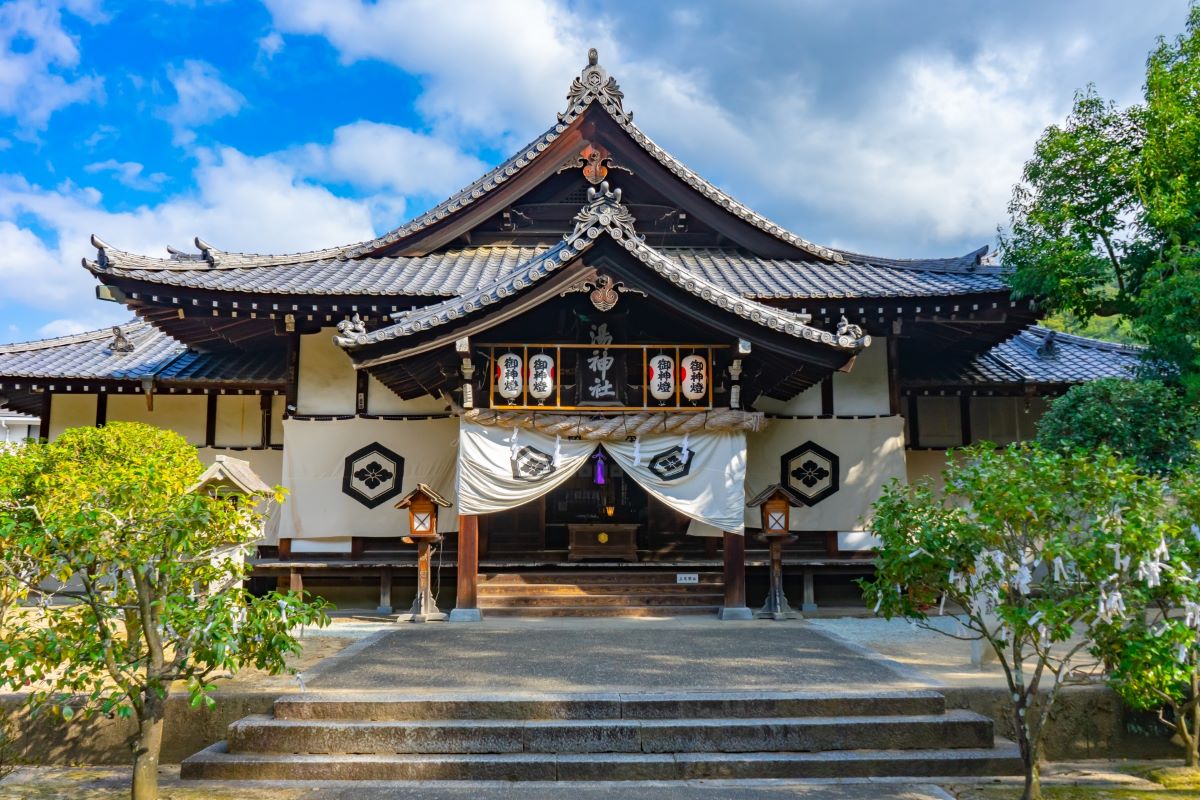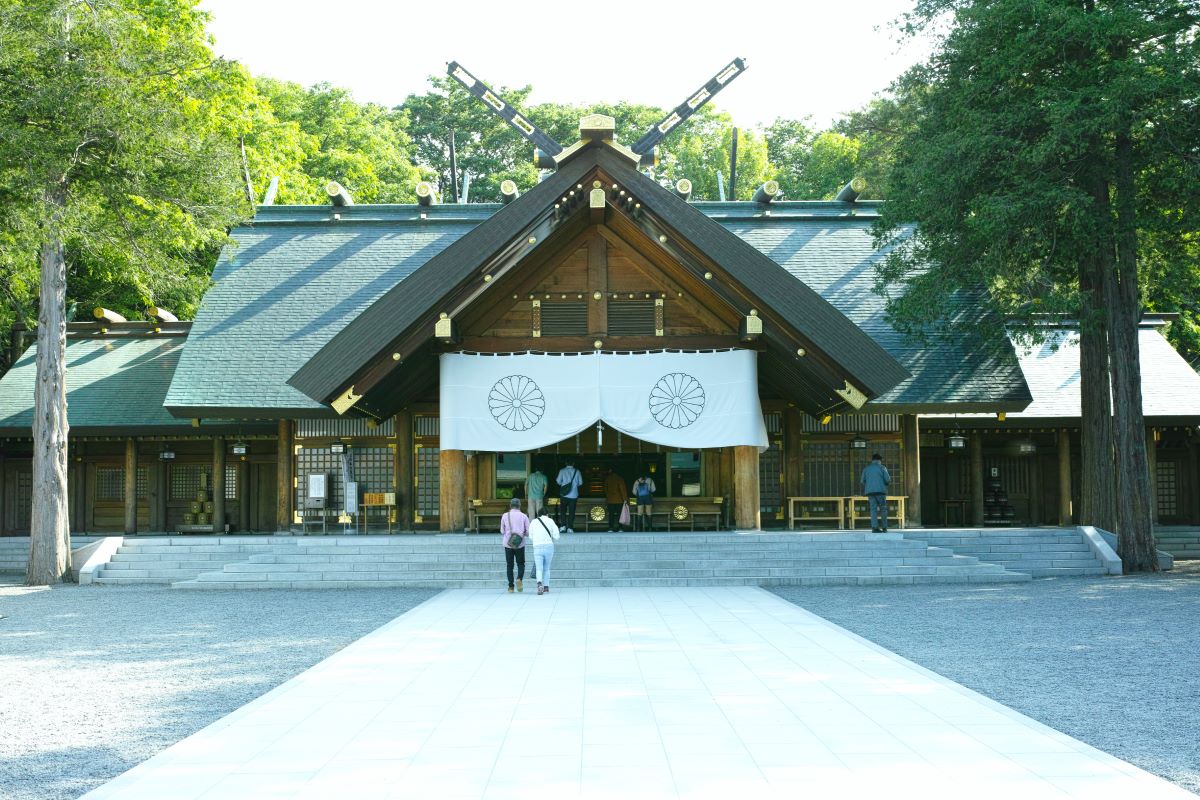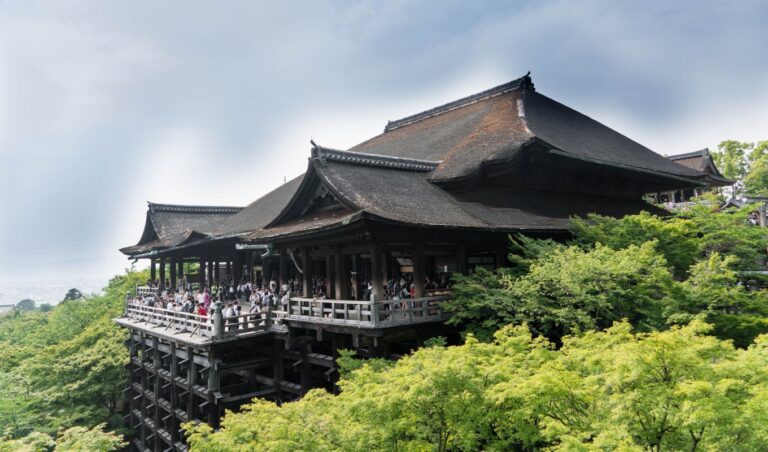Japanese shrines, known as Jinja are an integral part of the country’s culture and history. These sacred places offer a glimpse into the rich religious traditions of Japan, as well as the architectural and artistic styles that have developed over centuries.

Shintoism, the indigenous religion of Japan, is closely associated with the country’s many shrines.
These places of worship are dedicated to various Shinto deities, and are often located in serene natural settings.
Visitors are encouraged to purify themselves before entering the shrine, and to show respect for the deities and the shrine itself.
History of Japanese Shrines

Japanese shrines are an integral part of the country’s cultural heritage. They have a long and rich history that dates back to the prehistoric Jomon period, around 10,000 BCE.
During this period, people worshipped natural objects like rocks, trees, and mountains, which they believed had spirits or kami.
Over time, the concept of kami evolved, and people began to build shrines to house them. The earliest shrines were simple structures made of wood or stone, but they gradually became more elaborate and ornate, reflecting the wealth and power of the ruling class.
During the Nara period (710-794 CE), Buddhism was introduced to Japan, and it had a significant influence on the design and construction of shrines. Many Buddhist elements, such as pagodas and torii gates, were incorporated into shrine architecture, creating a unique blend of Shinto and Buddhist traditions.
During the Edo period (1603-1868), shrines became more closely associated with the samurai class, who used them to promote their own power and influence. Many new shrines were built during this time, and existing ones were renovated and expanded.
Today, Japanese shrines continue to play an important role in the country’s cultural and religious life. They are visited by millions of people every year, who come to pray, make offerings, and participate in festivals and other events.
Types of Japanese Shrines

When it comes to Japanese shrines, there are many different types, each with their own unique characteristics and purposes. Here are a few of the most common types:
- Jinja: These are the most common type of shrine in Japan. They are dedicated to Shinto deities and are often located in natural settings like forests and mountains.
- Hokora: These are small shrines that can be found in various places, such as at the base of a tree or near a river. They are usually dedicated to local deities or spirits.
- Taisha: These are large shrines that are dedicated to major Shinto deities. They are often located in prominent locations and are considered to be very important cultural sites.
- Gongen-zukuri: These are shrines that were built in the style of Buddhist temples. They were often used to promote the integration of Buddhism and Shintoism in Japan.
Each type of shrine has its own unique history and cultural significance. Whether you’re interested in the natural beauty of the jinja or the grandeur of the taisha, there is sure to be a shrine that will capture your imagination.
Architecture of Japanese Shrines

When it comes to Japanese shrines, the architecture is one of the most striking features. These structures are built with a unique style that reflects the country’s rich cultural heritage.
One of the most notable aspects of Japanese shrine architecture is the use of wood. The buildings are constructed with a post-and-beam system, which allows for flexibility in design while still maintaining structural integrity. The wood used is often cypress or cedar, which are known for their durability and resistance to decay.
Another important feature of Japanese shrine architecture is the use of roofs with a steep pitch. This style is known as irimoya-zukuri and is characterized by a gabled roof with two slopes on either side. The steep pitch is designed to help the roof shed snow and rain more easily.
Many Japanese shrines also feature a gate at the entrance known as a torii. These gates are typically made of wood or stone and are painted bright vermillion. They are meant to mark the transition from the mundane world to the sacred space of the shrine.
Finally, it’s worth noting that Japanese shrine architecture has evolved over time. While many traditional elements remain, modern shrines may incorporate more contemporary design features. Nonetheless, the beauty and elegance of Japanese shrine architecture remain a testament to the country’s rich cultural history.
Shintoism and Japanese Shrines

Shintoism is a religion that is unique to Japan. It is based on the belief in kami, or spirits that are present in all things, including nature, animals, and humans. Shintoism has been a major influence on Japanese culture for centuries, and its influence can be seen in the many shrines that are scattered throughout the country.
Japanese shrines are places of worship that are dedicated to the kami. They are often located in beautiful natural settings, such as forests, mountains, and seaside cliffs. Shrines can be small and simple, or large and elaborate, depending on the importance of the kami that is being worshipped.
Visiting a shrine is a common practice in Japan, and many people go to pray for good luck, success, or health. Before entering a shrine, it is customary to cleanse yourself at the temizuya, a water basin located near the entrance. You should purify your hands and mouth by washing them with water.
Once inside the shrine, you should approach the honden, or main hall, where the kami is enshrined. You should bow twice, clap your hands twice, and then bow one more time to show respect. You can then offer a monetary donation and make your prayer or wish to the kami.
Popular Japanese Shrines

If you’re planning to visit Japan, visiting a shrine is a must-do activity. Here are a few popular Japanese shrines that you should consider visiting:
Meiji Shrine: Located in Tokyo, Meiji Shrine is one of the most popular shrines in Japan. Dedicated to Emperor Meiji and Empress Shoken, this shrine is surrounded by a forest that covers an area of around 170 acres. The shrine is a popular spot for traditional Japanese weddings, and you might even witness one during your visit.
Fushimi Inari Taisha: Situated in Kyoto, Fushimi Inari Taisha is famous for its thousands of torii gates that form a path up the mountain behind the shrine. The shrine is dedicated to Inari, the Shinto god of rice and prosperity, and you’ll see many fox statues around the shrine as foxes are believed to be Inari’s messengers.
Itsukushima Shrine: Located on Miyajima Island near Hiroshima, Itsukushima Shrine is famous for its torii gate that appears to be floating on the water during high tide. The shrine is dedicated to three goddesses and is a UNESCO World Heritage Site.
Toshogu Shrine: Situated in Nikko, Toshogu Shrine is dedicated to Tokugawa Ieyasu, the founder of the Tokugawa shogunate that ruled Japan for over 250 years. The shrine is famous for its intricate carvings and decorations, including the famous “see no evil, hear no evil, speak no evil” monkeys.
These are just a few of the many popular shrines in Japan. Each shrine has its own unique history and significance, so be sure to do some research and choose the ones that interest you the most.
Visiting Japanese Shrines

Visiting Japanese Shrines is an essential part of Japanese culture. When visiting a shrine, it is important to be respectful of the customs and traditions that are associated with the shrine. Here are some tips to help you make the most out of your visit:
- Before entering the shrine, make sure to bow at the torii gate. This is a sign of respect and shows that you are entering a sacred space.
- When walking around the shrine, stay on the designated paths. Avoid stepping on any rocks or plants, as they may have spiritual significance.
- When approaching the main hall, cleanse your hands and mouth at the temizuya. This is done by using the ladle to scoop water and rinsing your mouth and hands.
- When entering the main hall, remove your shoes and place them in the designated area. Be respectful of any signs or instructions that may be posted.
- When praying at the shrine, throw a coin into the offering box and bow twice, clap twice, and bow once more. This is the traditional way of showing respect and gratitude.
It is also important to be aware of any special events or ceremonies that may be taking place at the shrine. These events may have different customs or traditions that you should be aware of. Finally, remember to be respectful of other visitors and their beliefs. By following these tips, you can have a meaningful and respectful visit to a Japanese shrine.
The Sum Up

Visiting Japanese shrines can be a fascinating and fulfilling experience. Throughout your journey, you have likely encountered many different types of shrines, each with their own unique history, architecture, and traditions. One thing that is consistent across all shrines is the sense of peace and tranquility that they offer. Whether you are seeking spiritual enlightenment or simply a break from the hustle and bustle of everyday life, a visit to a Japanese shrine can provide a much-needed respite.
During your visit, you may have also noticed the importance of ritual and tradition in Japanese culture. From washing your hands before entering the shrine to offering a coin and bowing in prayer, these customs are deeply ingrained in the Japanese way of life.
Overall, visiting Japanese shrines is a unique and enriching experience that should not be missed. Whether you are a seasoned traveler or a first-time visitor to Japan, taking the time to explore these sacred spaces can provide a deeper understanding of the country’s history, culture, and spirituality.



